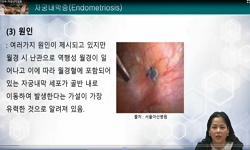Bilateral coronoid hyperplasia causes painless progressive trismus, resulting from coronoid process impingement on the posterior aspect of the zygomatic bone. The etiology of coronoid hyperplasia is unclear, with various theories proposed. An endocrin...
http://chineseinput.net/에서 pinyin(병음)방식으로 중국어를 변환할 수 있습니다.
변환된 중국어를 복사하여 사용하시면 됩니다.
- 中文 을 입력하시려면 zhongwen을 입력하시고 space를누르시면됩니다.
- 北京 을 입력하시려면 beijing을 입력하시고 space를 누르시면 됩니다.
https://www.riss.kr/link?id=A105690973
- 저자
- 발행기관
- 학술지명
- 권호사항
-
발행연도
2014
-
작성언어
English
- 주제어
-
등재정보
KCI등재
-
자료형태
학술저널
- 발행기관 URL
-
수록면
168-172(5쪽)
- DOI식별코드
- 제공처
-
0
상세조회 -
0
다운로드
부가정보
다국어 초록 (Multilingual Abstract)
Bilateral coronoid hyperplasia causes painless progressive trismus, resulting from coronoid process impingement on the posterior aspect of the zygomatic bone. The etiology of coronoid hyperplasia is unclear, with various theories proposed. An endocrine stimulus, increased temporalis activity, trauma, genetic inheritance and familial occurrence have all been proposed, but no substantive evidence exists to support any of these hypotheses. Multiplanar reformatting of axial scans and 3-dimensional reconstruction permit precise reproduction of the shape and size of the coronoid and malar structures, and relationships of all structures of the temporal and infratemporal fossae. This case shows remarkably increased mouth opening by coronoidectomy in a patient who complained of trismus due to hyperplasia of coronoid process.
동일학술지(권/호) 다른 논문
-
- Korean Association of Maxillofacial Plastic and Reconstructive Surgeons
- Moon, Jee-Won
- 2014
- KCI등재
-
Correction of Lip Canting Using Bioabsorbables during Orthognathic Surgery
- Korean Association of Maxillofacial Plastic and Reconstructive Surgeons
- Park, Young-Wook
- 2014
- KCI등재
-
- Korean Association of Maxillofacial Plastic and Reconstructive Surgeons
- Lee, Woo-Young
- 2014
- KCI등재
-
- Korean Association of Maxillofacial Plastic and Reconstructive Surgeons
- Kim, Hyo-Geon
- 2014
- KCI등재





 ScienceON
ScienceON KISS
KISS


